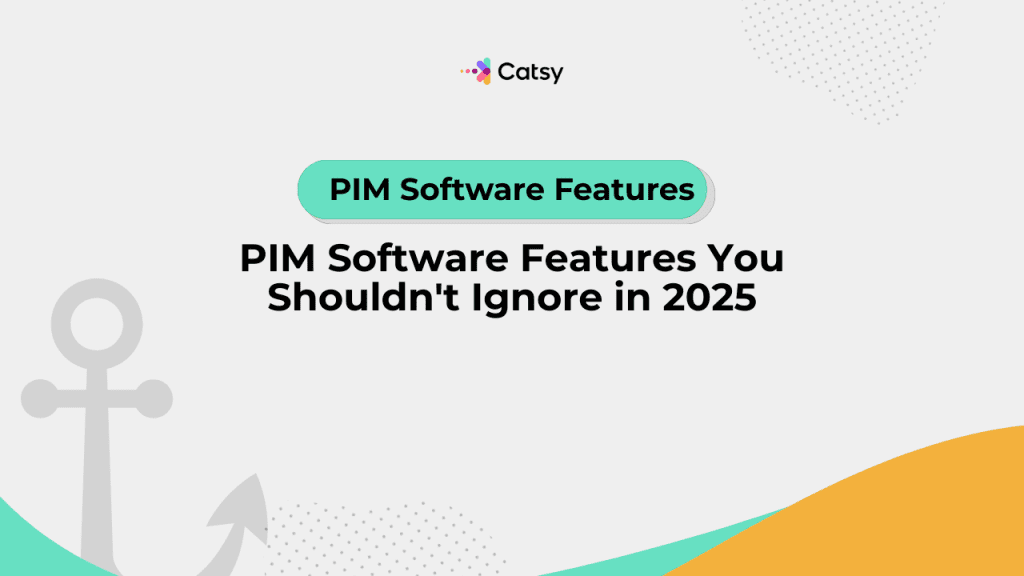
Table of Contents
- AI automation is no longer optional—it’s the competitive advantage you can’t afford to miss
- Manual product data management is killing your productivity and market responsiveness
- Your disconnected systems are sabotaging omnichannel success
- Cloud limitations are about to become your biggest scaling bottleneck
- Basic analytics aren’t enough for data-driven product decisions
What You Will Learn
- Why AI automation is essential for competitive advantage in product management
- How manual data management kills productivity and limits market responsiveness
- Why disconnected systems sabotage omnichannel success through brand inconsistencies
- How cloud limitations become scaling bottlenecks without modern infrastructure
In this Article
Are you still manually writing your product descriptions? Are your product updates taking three weeks? Maybe you’re caught between time-to-market demands and your legacy systems.
Your competition has figured it out: you need a modern PIM system.
If you’re fighting your PIM system instead of leveraging it for advantage, you’re experiencing outdated product information management pain. PIM features from 2020 aren’t just inadequate, they’re a handicap. In a market where AI automation and intelligent analytics are baseline, you need to step up.
Why the right PIM software features will make or break your 2025 success
The gap between modern product information management capabilities and legacy approaches is widening rapidly. Here’s what you need to stay competitive:
a. AI automation is no longer optional—it’s the competitive advantage you can’t afford to miss
While your teams struggle with data classification and manual product descriptions, your competitors are leveraging AI-powered PIM features. They’re generating compelling content at scale, organizing their massive catalogs with ease, and optimizing their information for maximum conversion.
Your manual approaches worked when you had hundreds of products. But now that you’re managing thousands of SKUs across multiple platforms, you need something more robust. Your teams are spending more time on routine data entry than on strategic operation.
How AI-powered PIM software features help
Modern AI automation transforms your product information management from manual bottlenecks to scalable advantages. Features include:
- Intelligent content generation following proven conversion patterns
- Automated classification of your data and quality identification
- Predictive analytics for trends and for pricing optimization
- Automated translation that matches your brand’s voice
- Quality assurance to prevent customer experience issues
With AI handling routine tasks, your teams can focus on strategic content planning and customer experience optimization rather than on manual data management.
2. Manual product data management is killing your productivity and market responsiveness
Your team members probably spend half their time on administrative tasks. But modern PIM could automate those tasks! Updating spreadsheets, coordinating systems, and manually syndicating content … these are all capabilities of a modern PIM.
While you’re busy coordinating your updates, your competition is capitalizing on trends with their automated processes. The productivity drain gets even worse when your catalog doubles. Manual processes are now a scalability constraint that limits your growth and your responsiveness to the competition.
How advanced data management features help
Modern PIM platforms eliminate manual overhead through intelligent automation. Streamlined workflows scale effortlessly as your business grows.
- Flexible data modeling: Extensible architectures accommodate diverse product types and complex hierarchies … without requiring system restructuring
- Automated workflow orchestration: Business rules trigger appropriate processes based on your product types, changes, and approval requirements
- Real-time data validation: Systems enforce quality standards and business rules automatically; this prevents errors before they become customer complaints
- Bulk operations efficiency: Advanced platforms can handle massive data updates, imports, and transformations without a decline in performance
- Integration automation: APIs and connectors automatically synchronize data between your PIM and your other business systems
Advanced data management capabilities promote your team from data administrators to strategic business contributors. Your team members drive growth rather than just maintaining information.
3. Your disconnected systems are sabotaging omnichannel success
Every minute that your information exists in siloed spreadsheets, you create more opportunity for inconsistencies, errors, and missed sales.
Customers who see different prices, descriptions, or availability across your website, mobile app, marketplace listings, and social commerce channels quickly lose confidence in your brand’s reliability. Meanwhile, your team is left to waste countless hours manually coordinating updates across platforms. They could instead be optimizing performance and driving growth.
Modern customers want – even expect – seamless experiences across all touchpoints, but disconnected systems make this consistency nearly impossible to maintain as you scale.
How omnichannel syndication features help
Integrated syndication capabilities ensure consistent, optimized product presentations across each of your sales channels while also automating the distribution process completely.
- Real-time channel synchronization: Updates propagate instantly across each of your connected platforms to eliminate temporal inconsistencies and risks of overselling
- Channel-specific optimization: Content automatically adapts to each platform’s requirements, formatting guidelines, and audience preferences
- Marketplace connectivity: Pre-built connectors for Amazon, Google Shopping, social commerce platforms, and business to business marketplaces streamline your expansion
- Automated error handling: Systems detect and resolve issues with syndication automatically, with intelligent “retry” mechanisms and status reporting
- Performance analytics: Channel-specific metrics identify opportunities to optimize, and measure the impact of different content approaches
Omnichannel syndication turns multiple disconnected sales channels into a coordinated, optimized, and scalable revenue generation system.
4. Cloud limitations are about to become your biggest scaling bottleneck
Your current infrastructure probably works fine with your existing catalog size and user load. But there’s a good chance it will become a serious constraint as your business grows, adds new markets, or experiences seasonal traffic spikes.
Traditional systems require expensive planning and lengthy upgrades. This diverts resources from development of strategic initiatives! Meanwhile, cloud-native platforms provide unlimited scalability, automatic updates, and global performance optimization … all without infrastructure management overhead.
It may surprise you to learn that the total cost of ownership for modern cloud-native solutions is often significantly lower than maintaining legacy systems. This is especially true when you factor in the opportunity cost of your limitations.
How cloud-native architecture helps
A modern PIM platform will provide you with unlimited scalability and automatic optimization. This eliminates infrastructure constraints on your growth.
Features include
- Elastic resource scaling which will automatically adjust capacity without manual intervention
- Global performance optimization through content delivery networks ensuring worldwide fast access
- Automatic feature updates delivering new capabilities without downtime
You can all but eliminate failure points when you implement built-in redundancy, and a predictable subscription cost will eliminate large (surprise!) capital investments. Cloud-native architecture changes your infrastructure from constraint to enabler.
5. Basic analytics aren’t enough for data-driven product decisions
While you’re working with your chaotic spreadsheets, you can’t analyze product performance and customer behavior. But your competition can; they benefit from data-driven optimizations.
Basic reporting that shows “what happened” isn’t sufficient for success in today’s e-commerce landscape. You need predictive insights that show what’s likely to happen, and recommendations to tell you what to do about it.
Without comprehensive analytics, you’re making critical decisions based on a gut feeling. Wouldn’t you rather use data-driven insights to optimize your market strategy?
How advanced analytics features help
Intelligent analytics elevate your product information management, taking it from reactive administration to proactive optimization.
- Performance dashboards: Real-time visibility into content completeness, channel performance, and conversion metrics enables immediate optimization
- Predictive intelligence: Machine learning algorithms forecast demand, identify trends, and recommend proactive strategies based on comprehensive data analysis
- Digital shelf analytics: Competitive intelligence shows how your products perform relative to competitors across each of the major selling platforms
- Content optimization insights: AI analyzes which information elements drive engagement and conversion, then can suggest specific improvements
- ROI measurement: Comprehensive tracking demonstrates the business impact of product information improvements across each of your channels
Advanced analytics capabilities ensure that each information decision you make is backed by data.
Make Catsy DAM and PIM Software an Extension of Your Team
Book a Free DemoStop fighting your technology and start leveraging it for growth
Do you want to know the difference between a thriving business and a struggling one in 2025? It’s PIM software features that enable quick execution, smart optimization, and scalable growth.
Each day you spend managing your manual processes is a day that your competition sails ahead with AI-powered efficiency. The solution isn’t just to upgrade your legacy system – it’s to adopt the modern capabilities of a robust PIM.
Catsy’s comprehensive platform delivers essential 2025 features:
- AI-powered automation
- Advanced data management
- Omnichannel syndication
- Cloud-native scalability
- Intelligent analytics
Don’t let outdated features limit your potential! Choose platforms that deliver the advanced capabilities your business needs.
Key Takeaways
- AI automation enables competitive advantage through intelligent content generation and automated classification
- Manual data management kills productivity while competitors operate with automated efficiency
- Disconnected systems sabotage omnichannel success through inconsistencies that erode customer trust
- Cloud limitations become scaling bottlenecks without elastic infrastructure supporting unlimited growth
- Basic analytics aren’t sufficient compared to predictive intelligence and performance optimization
Want more tips, tutorials, and insights on product content and e-commerce operations?
Stay connected. We post regularly to help brands like yours scale smarter.
Are You Ready To streamline your product content management?

Frequently Asked Questions
AI automation enables intelligent content generation at scale! Automated data classification and predictive analytics further act to give you a competitive advantage.
Advanced data management can eliminate manual overhead through automated workflows, real-time validation, and bulk operations that scale effortlessly. Unless your specific business requires custom coding, there’s no need for additional human resources.
Integrated syndication ensures that each of your products are presented in a consistent way, no matter where your customers find you. Channel-specific optimization, automated error handling, and real-time sync are features of a modern PIM.
Cloud-native architecture provides elastic scaling, global performance optimization, automatic updates, and predictable costs without infrastructure management overhead or capacity constraints.
Intelligent analytics provide performance dashboards, predictive intelligence, competitive insights, and content optimization recommendations that transform reactive administration into proactive strategic optimization.
Subscribe For More Content
Sign up for monthly tips on how to drive revenue with product content.




